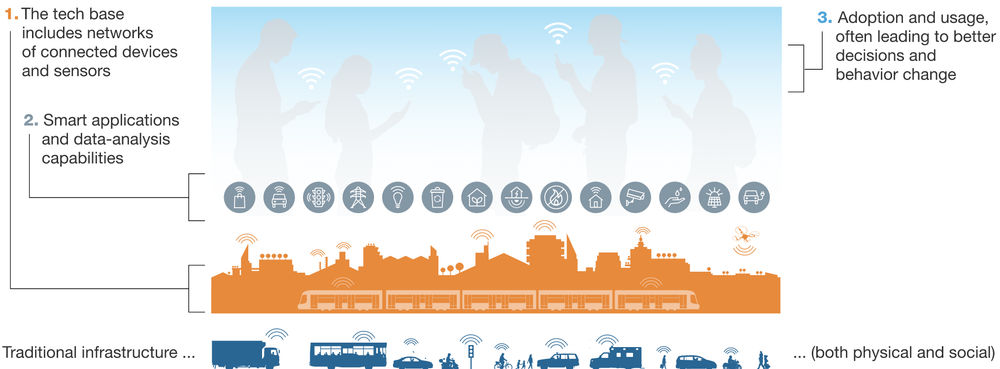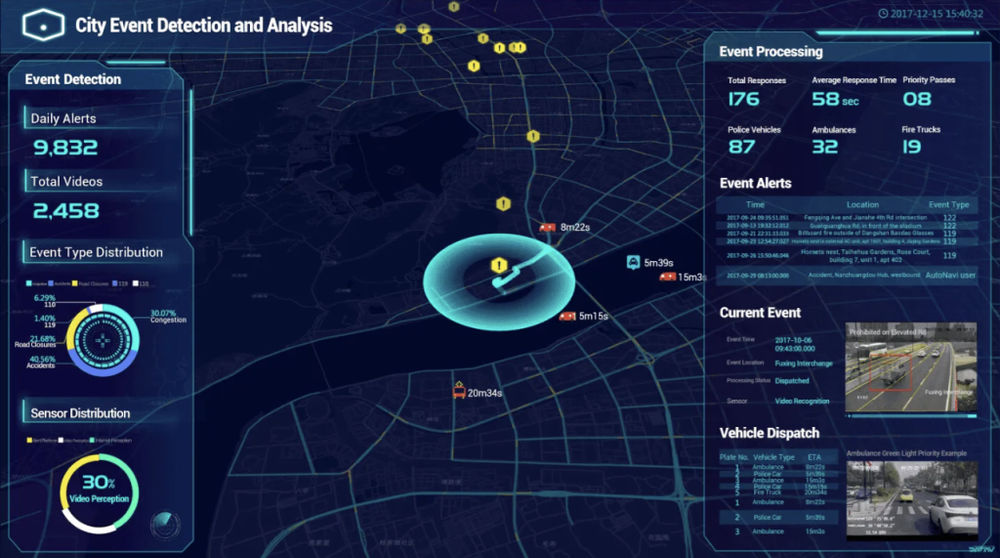Rapid urbanisation has brought numerous challenges to urban areas in China, including traffic congestion and pollution in cities. Driven by technology and services, Smart City construction has emerged as a solution to these problems.
According to McKinsey & Company, there are three layers of smartness to evaluate the Smart City: 1) Connectivity as the technology base; 2) Smart applications and data-analysis capabilities to deliver workable solutions; 3) Adoption and usage by the general public to interact with these technologies [1].

Helping cities gather and process data is one place Artificial Intelligence (AI) is currently being put to use. To function, Smart City technologies require the processing of big data through the use of algorithms. AI can efficiently sift through Big Data to generate predictions as well as cost-effective solutions to fuel Smart City technologies. Moreover, predictive technologies enabled by AI can provide real-time intelligence and assist quick decision-making of Smart City applications. This is significantly changing the way cities are operated.
Predictive analytics assisting city governance
AI can make predictions based on patterns in existing data. For example, in 2020, Huawei helped the Xuhui District of Shanghai to innovate its “12345” city hotline service to an intelligent system. Based on the historical handling data of hotlines, the system used AI to dynamically analyse data from three dimensions: time, location and user profiling. Capable of predicting emerging social issues, it also supported service handling through a human + machine collaborative model. As an excellent example of city governance, it won Shanghai the “smartest city award” at the 2020 Smart City Expo World Congress [2].
AI driving innovation in smart services and smart platform
Smart Traffic and Smart Mobility are other areas in which AI-enabled predictive technology is widely adopted, making it possible to predict traffic jams by location and time, identify traffic volume to optimise traffic signals, predict changes in traffic under different conditions, etc. [3].

Alibaba’s City Brain project, which started out in the city of Hangzhou in Zhejiang province, began by monitoring and managing traffic flow [4]. The project went on to develop a smart parking decision analysis system. Combining map data and camera footage, the system sorted out a total of 1.30+ million parking spots in the city, with digital connection to 90+ million spots and filtered 30+ million spots with e-payment options. With real-time analytics and interaction via the connected data points, the platform further expanded parking services by including non-sensory payment, shared parking services, reverse car search, etc. [5].
This innovative practice embodies the idea of the City Brain project, which is to make the city “think” through AI and cloud computing technology and to optimise public services in real-time [6].

Digital living through an intelligent connection in future cities
A digital platform featuring resource coordination is vital for the sustainable evolution of Smart Cities. On the other hand, data itself can directly generate value through AI, not just through application platforms, but by providing more direct services for governments, enterprises and residents under an architecture that bases smart cities on AI and big data [7].
A powerful AI engine not only helps strengthen the functioning system of a city but also enhances its self-learning and self-evolution capabilities. As the cities and users become interconnected through sensor technologies and smart devices, the future city is anticipated to move towards digitalisation, networking and intelligence in urban development.
References
- [1] McKinsey Global Institute: Smart Cities: Digital Solutions for a More Livable Future, 2018
- [2] Economy News: Huawei’s Customers Win Three World Smart City Awards and Three Nominations at the 2020 Smart City Expo World Congress
- [3] Huawei: AI Empowering Smart City Whitepaper 2021
- [4] South China Morning Post: Across China, AI City Brains are Changing How Government Runs
- [5] Alibaba: Report on the Integrated Big Data and AI Solution for Smart Cities
- [6] Journals of IET: City Brain: Practice of Large-Scale Artificial Intelligence in the Real World
- [7] Huawei: Activating Intelligence Smart Cities and Smart Agriculture







